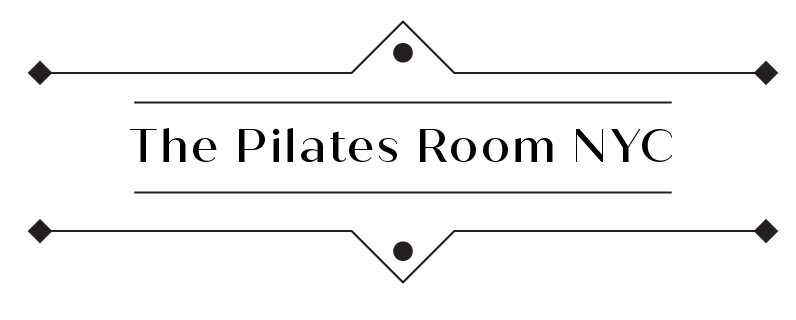How Pilates Helps Improve Posture and Core Strength: Tips from an NYC Instructor
Here are a few snapshots of city life as reported to me by my clients: sitting at work for hours on end, leaning ever so wistfully towards the blue light of their technology; shambling up subway stairs dragging a small cart in one hand, carrying a package in another and wearing a backpack loaded with books; scrunched on the subway, in the soft humidity of all of humanity, operating a phone with a single thumb while clutching the overhead bar somewhat precariously as they swerve erratically through the city’s transit tunnels.
Even my clients who proclaim not to be overly active are accustomed to life in New York City, which requires them to access flexibility, stamina and core strength at any given moment. My clients come to me to help them regain alignment and refine their posture after long days at the computer, to build up their core strength and improve flexibility as they navigate through the city and to help them be functionally fit in order to fully inhabit their lives. Even if you’re not a city-dweller, Classical Pilates can help you improve your posture and build core strength to enhance your practice of living.
Why Posture Matters and How It Affects Your Well-being
Our modern habits, hobbies and professions are built around technology. Along with gravity, our technology is drawing us steadily forward and down. Our necks and shoulders and backs are skewed in ways human history could not have predicted. If any of this sounds familiar, it might be a result modern life:
Chronic neck, shoulder, and back pain
Limited range of motion and tight muscles
Headaches and other discomforts caused by muscle tension in the back and shoulders
Pilates is one way to counteract all of this crustacean scrunch, and to lengthen the body with controlled, precise movements which can correct imbalances, restore alignment, and promote better posture.
The Pilates Approach to Posture
Pilates is fiendish about core muscles. This is not an obsession with displaying eight-pack abs but rather understanding that our deep core muscles stabilize the torso in very important ways that largely fly under the radar. These muscles are key for supporting proper alignment. Consider the following:
Core muscles: Abdominals, obliques, and back muscles work to stabilize your torso
Spinal extensors: Muscles along the back help you stand tall
Shoulder stabilizers: These small but mighty muscle groups prevent your shoulders from rounding forward
Through regular Pilates practice, you can develop the awareness to hold yourself upright, even when life pulls you in the other direction.
Building Core Strength with Classical Pilates
Here’s another piece of news that might be surprising: The core isn’t just your abs—it includes the muscles of the pelvic floor, lower back, and diaphragm. These muscles work together to keep you stable and balanced.
Classical Pilates exercises like the "Hundred," "Roll-Up," and "Single-Leg Stretch" activate these muscles, training them to engage properly in both exercise and daily movement.
A stronger core means:
Better support for the spine, reducing lower back pain
Improved balance and coordination
Enhanced athletic performance, from running to dancing
A stronger core also means carrying a bag of groceries six blocks home without flinching; jumping a snow/ice puddle that has formed near the crosswalk in the winter with the confidence of a hurdler; lifting and placing your non-checked, aggressively heavy luggage in the overhead compartment in one smooth I-don’t-need-your-help-young-man motion. A strong core means independence as you age and the stability and strength to move through space with confidence.
My Tips for Improving Posture and Core Strength
I give my clients tips for maintaining awareness of their body even when they’re not in the studio, and I offer small adjustments to help them stay aligned, whether they’re sitting at their desks or standing in line at the bank. Here’s some tips that you can try anytime:
Engage Your Core
Imagine a gentle drawing-in of your belly button toward your spine. This subtle engagement activates the deep abdominal muscles that support posture.
Check Your Alignment While Sitting
When working at a desk, sit with your feet flat on the floor, your shoulders relaxed, and your spine tall. Try to avoid crossing your legs, which can cause an imbalance in your frame.
Incorporate Pilates Mat Exercises at Home or Work
If you have a few moments, and if you have the space in your home or office, you can practice simple exercises like Pelvic Tilts or Bridges to stay connected to your core throughout the day. Even a few minutes a day can make a difference.
Breathe Deeply and Intentionally
Pilates emphasizes breath control. Use your exhale to deepen core engagement and release tension from your shoulders and neck.
Strengthen Your Core, Transform Your Posture
Improving your posture and core strength requires attention and consistency—there is no short-term corrective, but strengthening those deep core muscles that you never knew you had and remembering to breathe with intention can help you slowly begin to inhabit your body fully, whether you’re in the middle of a Pilates workout or just going through the routine of your daily life.
Ready to improve your posture and feel stronger from the inside out?
Explore our private and small group offerings at The Pilates Room NYC in Chelsea. Whether you're new to Pilates or looking to deepen your skills, it’s helpful to have an experienced instructor to guide you through each move and give you tips for improving your practice. You can book your first one-on-one session here.

